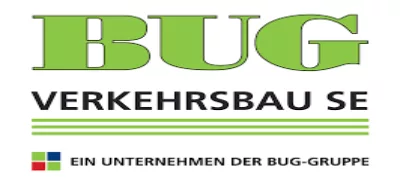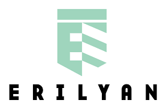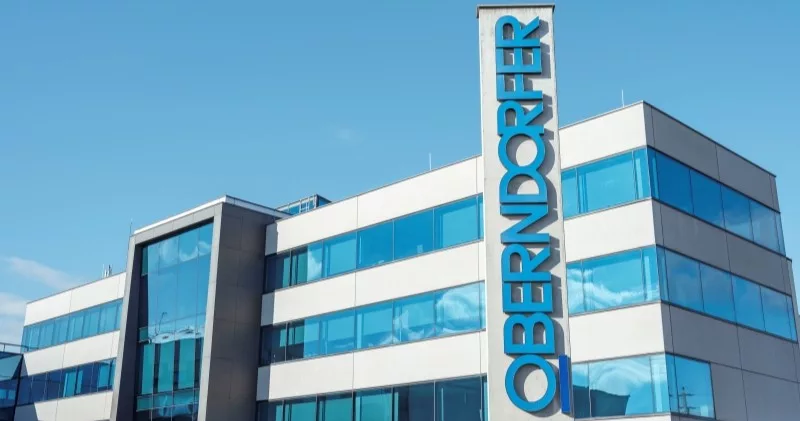
Are you tapping into accurate data to amplify the scope of your projects?
GET MY FREE DEMO2D/3D Takeoff & Estimating Software
The construction industry’s software solutions have altered how professionals manage 2D/3D takeoff and estimating, providing unparalleled accuracy, efficiency, and real-time collaboration. 2D and 3D takeoff software technology enables construction teams to get exact values from both standard 2D drawings and sophisticated 3D Building Information Modeling (BIM) models. By automating quantity takeoffs, these systems eliminate the possibility of human error and improve operations, guaranteeing that cost estimates are precisely related to design data. This integration enables quick updates when design changes occur, resulting in more accurate budgeting and forecasting throughout the project lifecycle.

Explore RIB’s Estimating & Construction Takeoff Software Solutions
RIB Software’s suite of solutions includes powerful construction takeoff software, seamlessly integrating visual data with exact cost estimate activities. Our solutions are powered by BIM technology, enabling users to extract values directly from 3D models or 2D drawings, minimizing human labor and boosting accuracy. The automated quantity takeoffs are connected to the estimating module so that any changes in the design are reflected in the cost calculations in real-time. This simplifies the estimating process, reduces errors, and improves collaboration among teams, resulting in better resource management and project cost forecasting. Below, you’ll find details about our offerings.
RIB CostX
RIB CostX is 3D estimating software hardwired to produce estimates across all design stages, project types, and locations. It supports a range of BIM and 2D files which allow teams to measure quantities and estimate costs quickly and accurately.
RIB CostX is the backbone for quantity surveying firms, contractors, and developers to produce comprehensive estimates. With estimates live-linked directly to the measured dimensions and cost database, they can eliminate errors and increase accuracy. Other benefits include:
- Comprehensive 5D BIM capabilities allow you to future-proof your business.
- Avoid re-measure: The auto-revisioning functionality means changes are never missed.
- Powerful spreadsheet-based workbooks help to create customized client outputs.

RIB Candy
RIB Candy is construction takeoff software that focuses on streamlining the estimating process with a resource-based approach. The Quantity Takeoff module provides an on-screen takeoff feature that allows you to seamlessly add or extract quantity information from 2D drawings and electronically compile BOQs – all fully integrated with Candy’s powerful Estimating and Project controls that enable an accurate foundation for your estimate, progress, and final account measurements.
Using the built-in Quantity Takeoff system, construction professionals can seamlessly and digitally compile/update BoQ information using PDF and CAD drawing formats. Users can measure estimating and valuation quantities directly and utilize this data across all aspects of the project control process. Other benefits include:
- User customized templates that can be created for fast and accurate measurements in repetitive measures.
- Dynamic link and references to the BOQ for accurate pricing calculations.
- All the measurement tools to measure linear, area and number quantities and compare drawing revisions.
- Measure multiple bill items using common dimensions to eliminate repetitive measures.

RIB 4.0
The integrated calculation functions in RIB 4.0 ensure precise optimization of quantities and costs, both in alphanumeric and model-based forms. This takes into account not only project-specific factors like material costs, labor costs, equipment costs, overhead, and the schedule but also cross-project aspects like resource availability, risk criteria, and potential rework in the calculation.
By business intelligence functionality, RIB 4.0 supports contractors, developers, and owners to interact with enormous amounts of data. In doing so, they are able to maximize cost efficiency and manage records across the asset lifecycle. Other benefits include:
- Generate multiple performance specifications per project with varying structural layouts of object numbers.
- Make the most of flexible organizational structures through calculation items.
- Perform line-based calculations with a hierarchical resource structure.

What Our Clients Say














































Construction Takeoff Software FAQs
3D takeoff software is a digital construction solution that automatically extracts quantities of materials from a 3D model. These tools help to increase the accuracy of the takeoff and estimating process, ensuring effective financial management in building projects.
Powered by BIM technology, these solutions allow users to access a 3D model of the project, making it easier to assess material requirements and identify potential issues. Plus, it automates the extraction of quantities, saving time and reducing the risk of errors due to manual data entry. 3D models also give higher visibility into all project aspects, boosting collaboration and communication between disciplines.
3D estimating software automates cost estimation in construction projects using a 3D model. It provides a highly visual representation of the project that helps better assess spatial relationships, facilitating the early identification of potential issues.
These software platforms go further than takeoff tools by including features like resource allocation, cost breakdowns, and cash flow analysis, empowering project managers to plan and execute with greater confidence. These advancements in 3D estimation led to more efficient project delivery, better cost management, and greater collaboration across design, engineering, and construction teams.
There are many benefits to 2D and 3D takeoff software. The main one is that it digitizes the process, making it a lot more time and cost-effective. Although many still rely on traditional methods, the 3D approach is quickly becoming the norm in the industry. Some tangible benefits include:
- Better visibility: One of the biggest benefits of working with a 3D model is its visual and highly interactive nature, which provides higher visibility into the project’s scope and design to help better understand its nuances. For instance, 3D takeoff software allows you to zoom into specific areas or design elements to better understand materials and other requirements.
- Increased accuracy: Thanks to automation technology provided by this software, the quantity surveyor or construction estimator no longer needs to manually count the quantities of materials and add them to a spreadsheet. This significantly increases the accuracy of estimates by eliminating the risk of manual error and by eliminating the guesswork from the process.
- Time effectiveness: An additional benefit that comes with automation and the 3D environment is time effectiveness. By eliminating the need for manual calculations and data entry, the quantity takeoff process is much more agile and accurate, leaving time for professionals to focus on other high-value tasks.
- Enhanced collaboration: The cloud environment provided by these solutions makes it possible for the different teams to extract valuable data about the project and ensure everyone is on the same page about design changes and any other relevant information, avoiding reworks, claims, or other issues.
There is plenty of takeoff software out there, each with unique features and functionalities. To pick the best one, you need to first evaluate your needs and objectives to select the best fit. However, there are some key functionalities the best construction takeoff software should have:
- 3D estimating: Specialized construction takeoff software should offer BIM support to perform accurate estimating from a range of files. That way, teams can reduce errors and ensure better financial management with real-time data.
- Integration of 2D and 3D: The best construction takeoff software should offer the possibility to integrate 2D and 3D files to perform accurate takeoffs with all the data available.
- Collaboration: Any takeoff solution worth its salt should offer collaboration instances like the ability to work simultaneously on relevant documents and keep an audit trail for transparency.
- Auto-revisioning: This invaluable feature allows users to compare different versions of a drawing and highlight the differences to automatically update quantities and estimates, saving time and reducing the risk of errors.
- On-screen takeoff: This feature allows you to perform a 2D takeoff from digital drawings and blueprints and compile an electronic bill of quantities to build a solid foundation for your estimates.
- Scalability: While not directly a feature, the software you choose should have the ability to grow and adapt to your business needs. This will prevent you from paying for unnecessary features or having to change to another solution if your company grows.
Traditional methods of takeoff and estimating rely on manual calculations and paper-based drawings. While this might have changed with many software solutions digitizing drawings and other design documents, the process still requires the quantity surveyor or estimator to manually count quantities and add them into a spreadsheet or other systems, which can be highly subject to errors.
3D takeoff and estimating software eliminates these challenges by not only digitizing the process but also automating it. This makes the process more effective, accurate, time-efficient, and most importantly, cost-efficient. For instance, contractors who rely on 3D takeoff software to price their bids can ensure their pricing is fair and accurate, which will gain them more contracts while ensuring profitability. This is not always the case with traditional methods, as the bid can be priced incorrectly, which can affect the contractor’s profit.
The accuracy and efficiency provided by modern construction takeoff software helps to streamline the cost estimation process by automating several tasks including quantity takeoff. This results in realistic estimates that reduce the risk of budget overruns that were not accounted for. Plus, most takeoff solutions offer 3D design models that provide real-time data about spending patterns and resource allocation, this means teams can respond to any issues or design changes properly and mitigate their impact on the budget. Having this level of accessibility powered by digital construction technology allows for smart cost control in construction projects.










